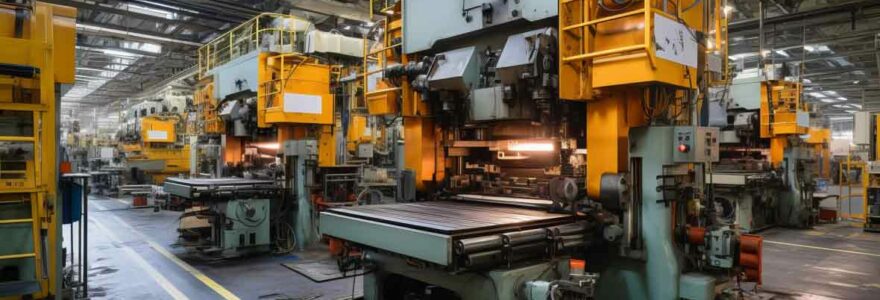Industrial design prototyping stands as an evolving discipline, ever influenced by fresh methodologies and technological advancements. Cutting-edge prototyping methods are transforming the landscape of this sector, forging novel trends and standards. These shifts encompass everything from the utilization of current techniques, to the incorporation of data and feedback, and the creation of functional prototypes through emerging technologies. Rapid prototyping further propels product development, offering time efficiency, cost management, and enhanced precision. Simultaneously, new technologies continue to fuel prototype innovation, with virtual prototyping leading the charge towards a future brimming with possibilities. This evolution, characterized by constant change and adaptation, shapes the trajectory of industrial design, carving out a path for exciting developments in the domain.
Exploring Prototyping Methods Transforming Industrial Design
Modern industrial design relies heavily on prototyping, a process that has undergone significant transformation in recent years. Diverse prototyping methods have become the backbone of industrial design, aiding designers in efficiently turning concepts into tangible prototypes.
Prototyping Techniques in Current Use
Presently, numerous prototyping techniques are exploited in industrial design. The selection of the appropriate method depends largely on the type and complexity of the project. For instance, rapid prototyping, a method that allows quick creation of physical models using 3D computer-aided design (CAD), is widely used by designers for its speed and accuracy. Alternatively, virtual prototyping, which involves the use of software to create a virtual 3D model, is favored for its cost-effectiveness and ability to easily alter designs.
Role of Data and Feedback in Prototyping
Effective prototyping involves not only the creation of models but also the analysis and incorporation of user data and feedback. This interactive approach to design allows designers to refine and improve their prototypes based on real-world user experiences.
Creating Functional Prototypes with New Technologies
New technologies are continually transforming the process of creating prototypes in industrial design. Advanced tools such as 3D printers and computer-aided design software are revolutionizing the way designers create and test their designs.
Role of Rapid Prototyping in Product Development
Prototyping at a rapid pace has become a game-changer in the realm of product development. This method has revolutionized the way industries design and iterate their products, thereby offering a significant reduction in the time taken from the conception of a product to its market launch.
Rapid Prototyping and Time Efficiency
Rapid prototyping accelerates the product development process by enabling quick testing and iterations. Enabling the creation of multiple prototypes in a short span, it helps in meeting the user needs more efficiently. For example, BMW used rapid prototyping to streamline their design process, which resulted in a 58% reduction in development time.
Cost Implications of Rapid Prototyping
While being time-efficient, rapid prototyping also proves to be cost-effective. By identifying design flaws early in the process, companies can save significant resources that would otherwise be spent on rectifying errors in the final product stage. A study by the University of Nottingham showed that industries adopting rapid prototyping witnessed a 40% reduction in product development costs.
Quality and Precision in Rapid Prototyping
Quality is another area where rapid prototyping shines. The precision offered by this method allows developers to create products that closely match the final design. This level of accuracy aids in successful user testing and improves the overall quality of the final product.
Emerging Technologies Fueling Prototype Innovation
With an influx of new data and materials, these technologies are not only redefining the scope of prototyping but also paving the way for more sustainable alternatives. For instance, the advent of 3D printing technology has enabled the use of biodegradable materials in prototype creation, fostering an eco-friendly approach. This paradigm shift towards sustainability is indeed a testament to the power of technological advancement.
Yet, with the rapid pace of technological evolution, it becomes imperative to keep track of the latest in prototype innovation. Regular updates on technological advancements aid in staying ahead of the curve and leveraging the most effective and cost-efficient solutions. An in-depth analysis of the return on investment in new technologies, for example, can provide valuable insights into their efficacy and long-term viability.
These emerging technologies are not just about creating impressive prototypes, they are about fostering a culture of innovation and sustainability. Their potential to drive change and shape the future of prototyping is immense and undeniable.
Virtual Prototyping: Shaping the Future of Industrial Design
The influence of virtual prototyping on the efficiency and speed of product design is indisputable. Its economic benefits over traditional prototyping methods have been recognized by industry leaders across the globe. The advent of augmented reality and virtual reality has further advanced the possibilities of virtual prototyping, opening new doors to innovative design techniques.
Virtual prototyping aids in reducing design errors by allowing designers to receive immediate feedback. Seeing their designs come to life in a virtual environment enables them to make necessary adjustments before moving to the manufacturing stage. Case studies from companies like Boeing and Ford have shown the significant improvements in their design processes through the use of virtual prototyping.
The market is not short of sophisticated virtual prototyping software. Providing a range of functionalities, these software solutions are transforming the landscape of industrial design. Yet, working in the field of virtual prototyping requires a unique set of skills, including a deep understanding of technology, design principles, and user experience.
Contributing to sustainability by minimizing the need for physical materials, virtual prototyping is also facilitating collaboration and communication within design teams. Anticipating product concepts that may be complex becomes feasible with virtual models, offering a clearer vision for production. Despite challenges in adopting virtual prototyping in the industry, its future trends promise to significantly alter the terrain of industrial design.
